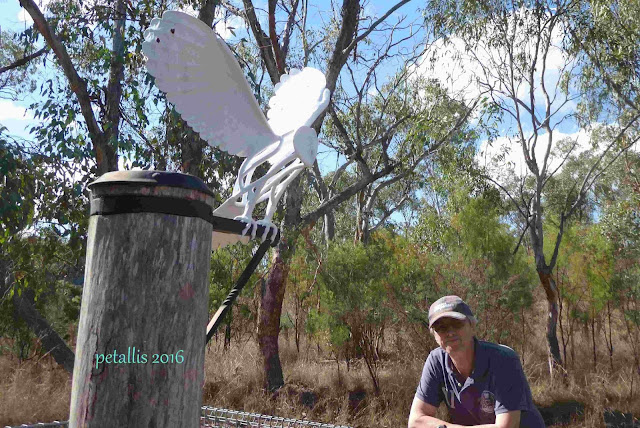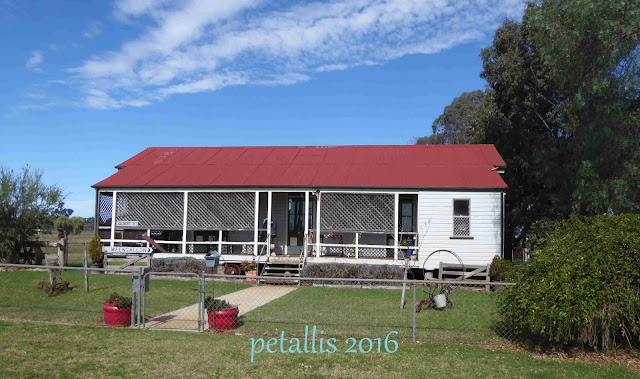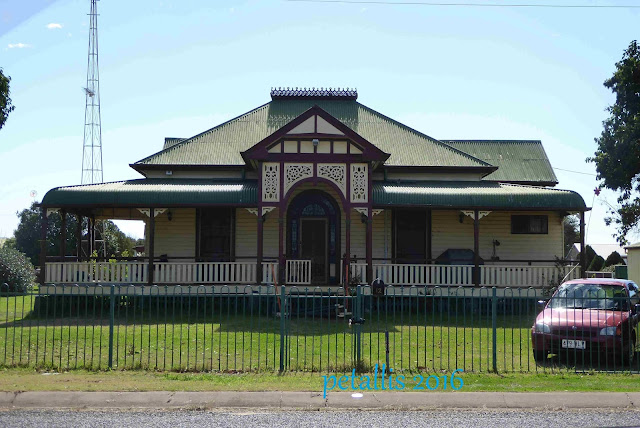One thing we like to do when we are travelling is to do the historic routes. Of course if one can get a copy of the route one will know what we will see. We were lucky to have lovely Maureen at the Clifton Information Centre who knew where the tourist routes info would be, so with our 'Savour Warwick and Surrounds' booklet off we went.
As the route started in Warwick, and we were leaving from Clifton, we by-passed the highway and Glengallan Homestead and headed along Goomburra Road to Ghost Gate Road. The road is dirt and we travelled about 2-3kms to the metal owl just outside the Ghost Gate. The history is in the photos below.
It is hard to believe that these flat fertile plains were once covered in large red cedar trees. We retraced our steps back to Goomburra Road and continued to Goomburra, This is where we took another detour and traveled into the Goomburra National Park.
Goomburra is mostly farms and many many bush camping areas. It is a Heritage listed area with many tiny streams and tall trees. There are loads of bush walks. We had a look at a few of the campsites and although they were in beautiful settings, the amenities were basic and few and the costs were high. Really don't think we stay there. Goomburra is an Aboriginal word meaning 'shield made from a tree.
As part of the Jumpers and Jazz in July Festival, the Goomburra Town Hall was hosting a Jazz High Tea. The cost was $25 per head, but all tickets were sold out before we even arrived on the Darling Downs.
After travelling as far as we could through the National Park, we went back to Goomburra and continued on the Cedar Route. We passed many farms and traveled along back roads to the Cunningham Highway, and after a few kms turned off again back to the back roads and more farms, ending up in Warwick - where, off course, we had a walk around the main street to listen to the jazz.
Some of the quirky sights we saw along the way - both letterboxes.
The total Cedar Route from Warwick round trip is 66 km.


















































